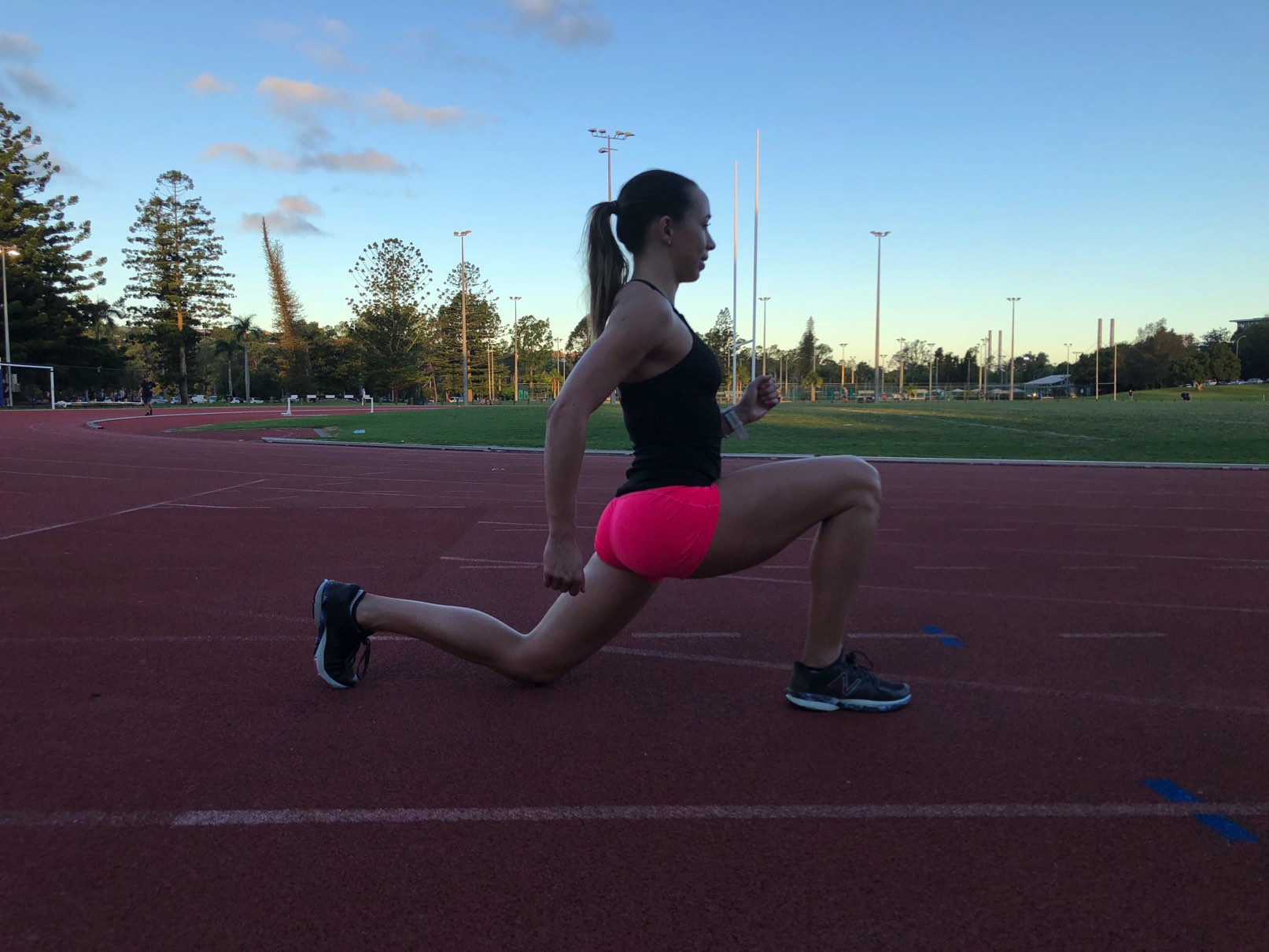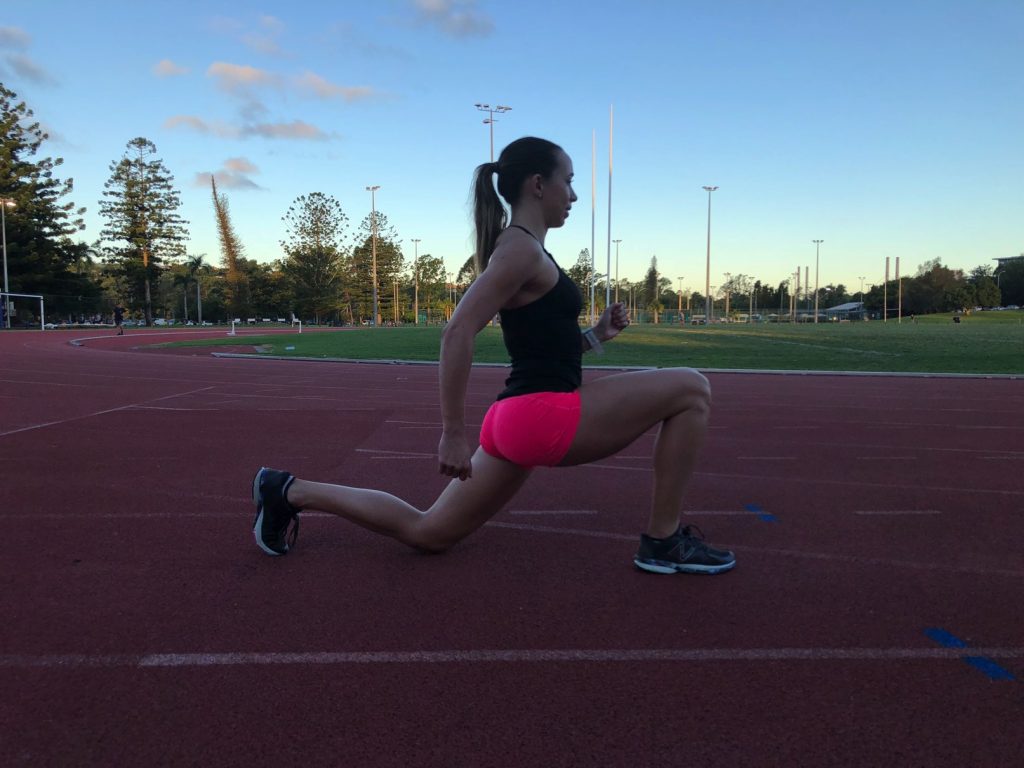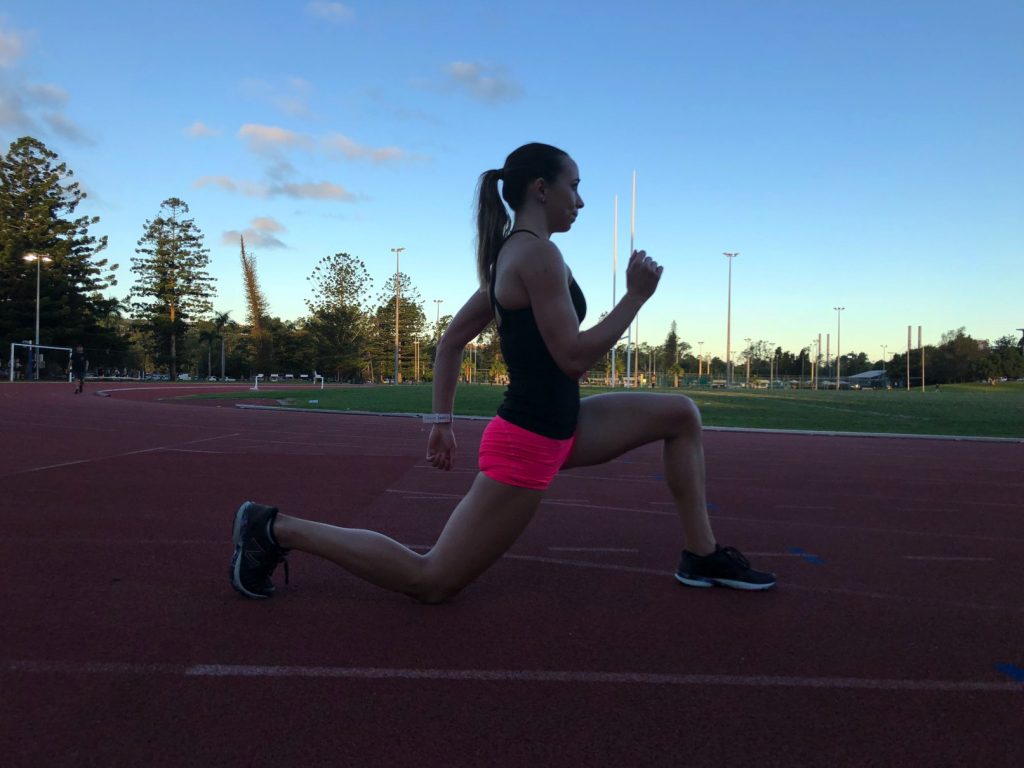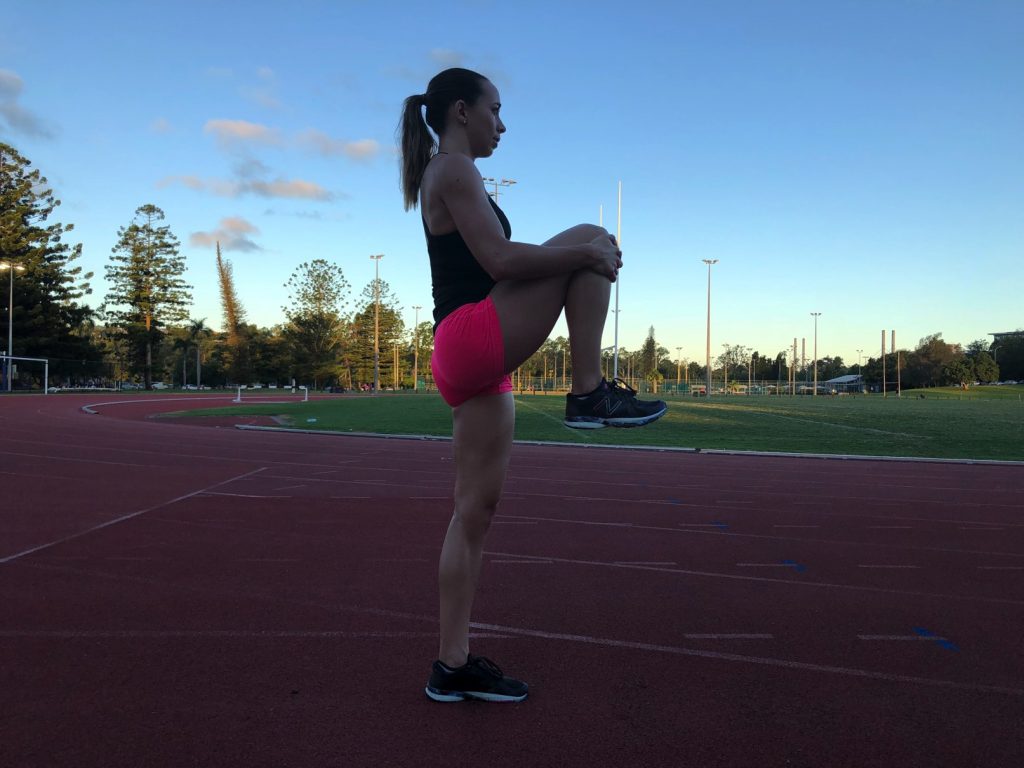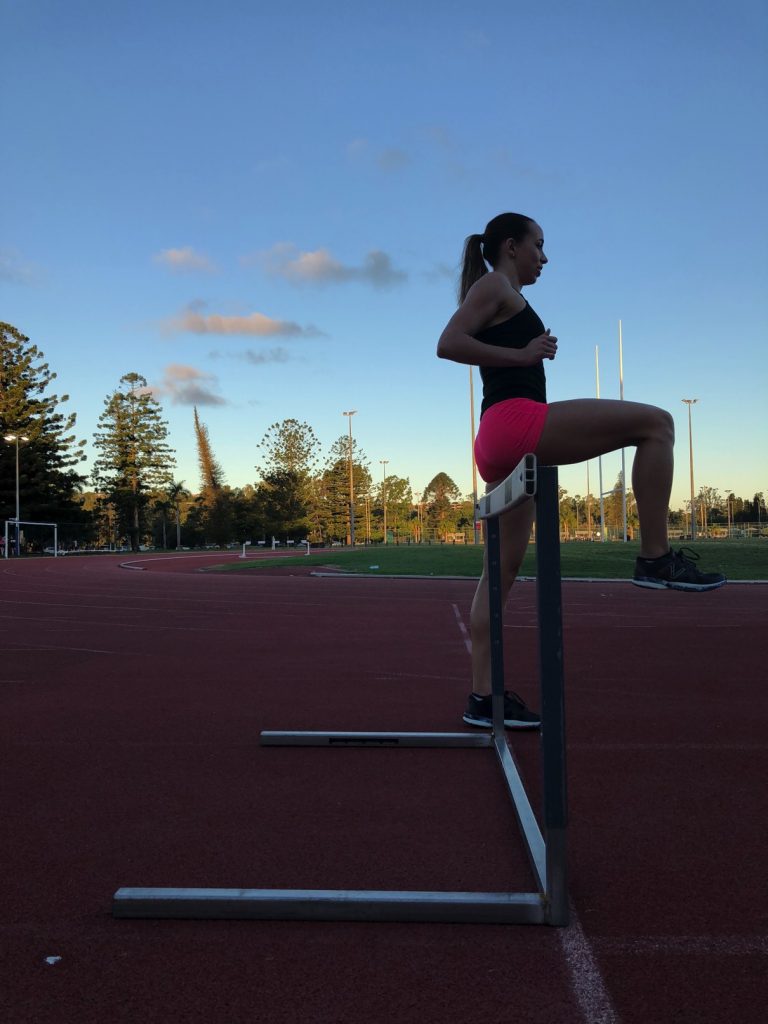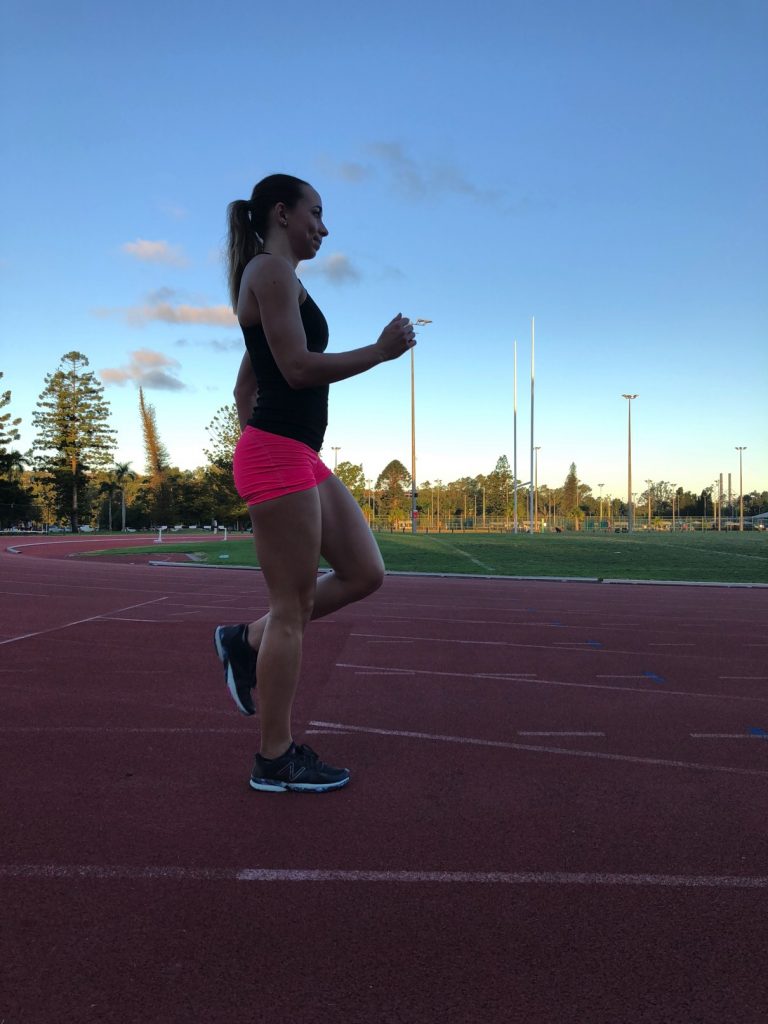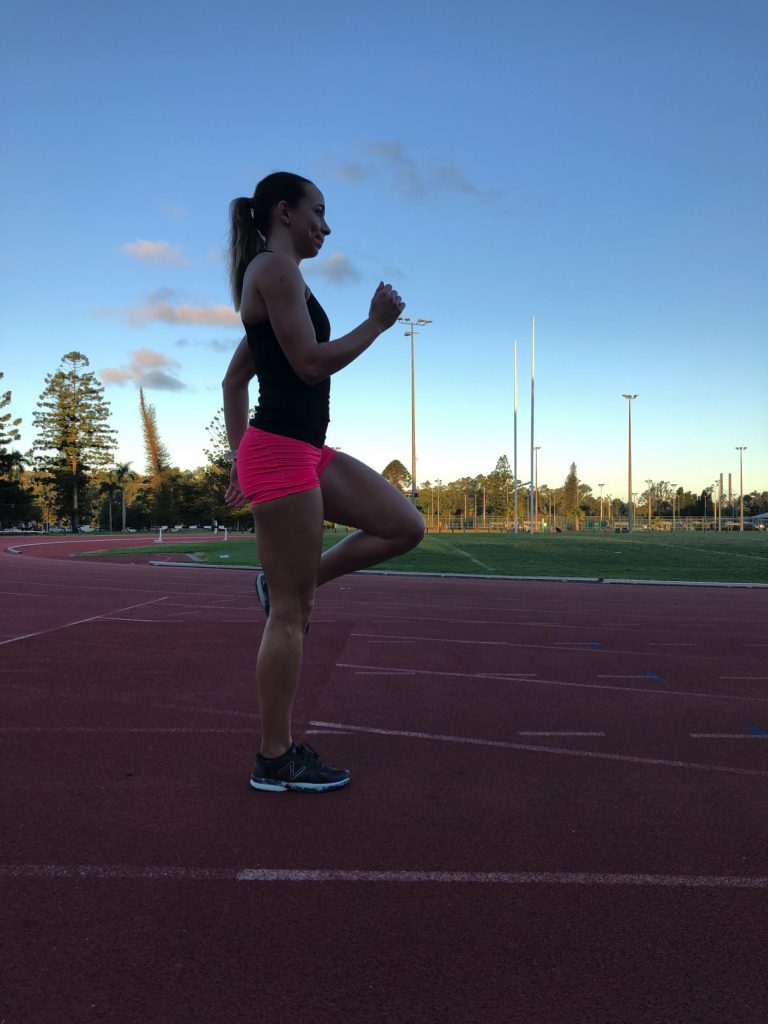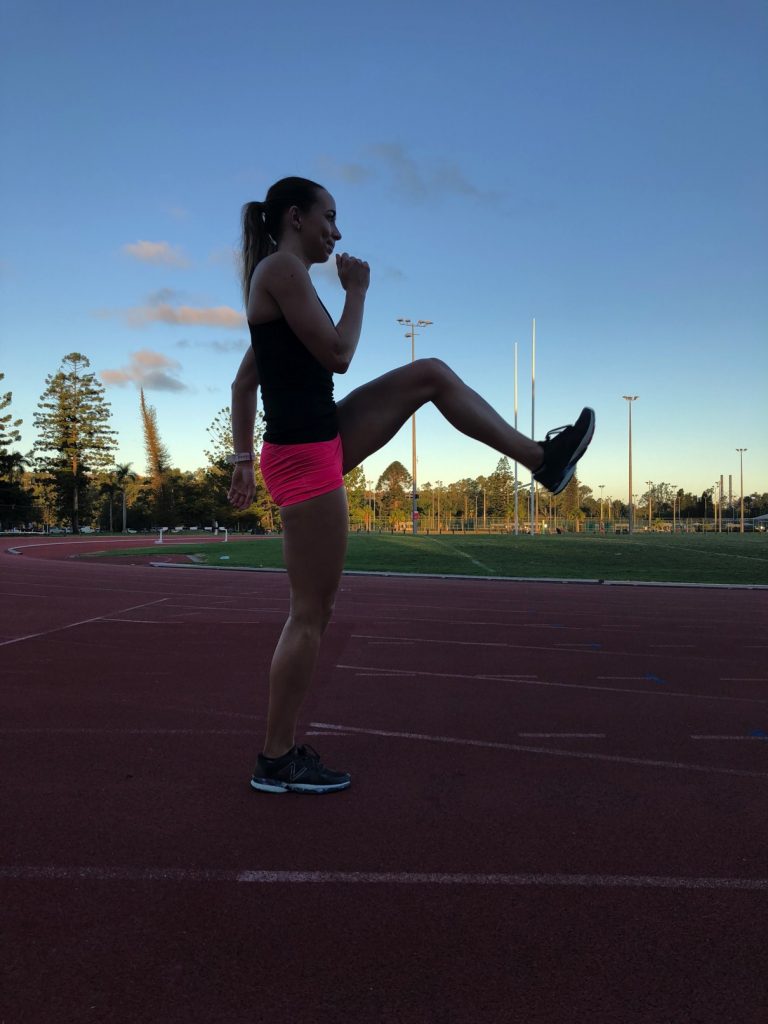By Caitlin Murdock – Runner’s Tribe
To perform to your full potential your primary focus, of course, should be on your running program. However, you should also ensure that you include strength and prehab exercises to prevent injuries and to improve your running efficiency.
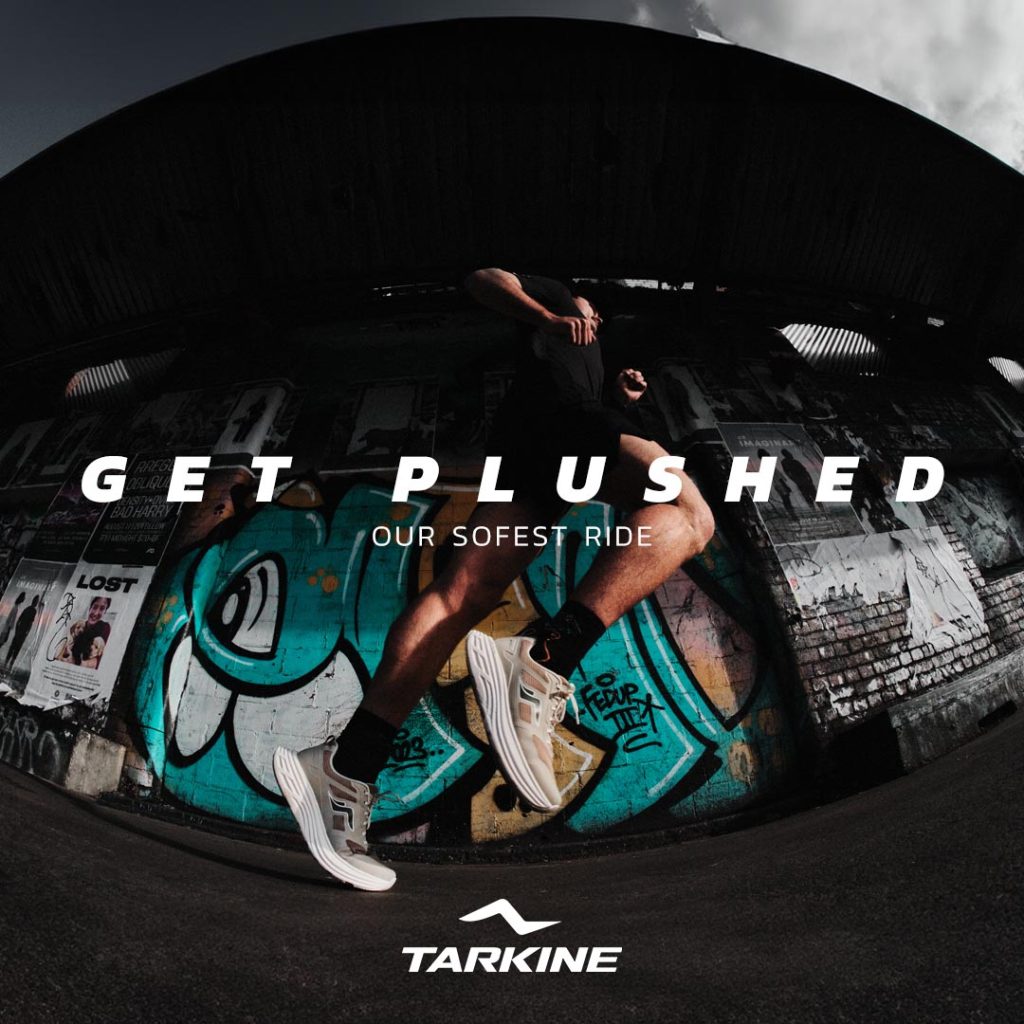
Often runners have a habit of spending so much time running that they neglect stretching and strength training. Having torn my plantar fascia which sidelined me from running for nearly a year, I have a newfound appreciation for stretching and strength training – predominantly for preventing a future injury but also for developing strength and power to improve my running efficiency and consequently better my race times.
Strength training
It is common knowledge that runners who do not include strength training into their weekly routine are at a higher risk of injury. The most common injuries for runners are caused by over-use of certain muscles. Overuse injuries are generally caused by strength imbalances in the muscles as when a muscle is weak, other muscles surrounding that muscle have to work harder to compensate for the weakness. These surrounding muscles can become overworked and susceptible to strains and tears.

Studies show that strengthening the hips and core can help prevent runner’s knee, whilst strengthening the calves and feet can prevent runner’s foot (i.e. plantar fasciitis). However, strength is not only important for injury prevention, it can also improve your muscle power and performance. In addition, strength training improves posture and running technique, allowing your body to move more efficiently with the added bonus of increasing your lean body mass and reducing body fat.
An example of my weekly strength workout (targeted at improving 800m times and injury prevention) is:
1. Wall sits:
(a) 1 x wall sit single leg (60s each leg)
(b) 1 x wall sit double leg for 2mins
2. 2 x 10 single leg press (I aim for 30-40kg each leg)
3. 2 x 10 lunges with 10 kg dumbbells
4. 2 x 10 step ups with 10kg dumbbells
5. 2 x 10 single leg squats on a box
6. 2 x 10 lat pulldown (35kgs)
7. 2 x 10 bench press (40kgs)
8. 2 x 10 tricep dips
9. 2 x 10 pull up
10. 2 x 10 push ups
11. 2 x 10 back extensions (I hold a 10kg weight – but you should start with no weight for this exercise until you feel strong and confident to add weight)
12. Bridges:
(a) Front bridge 2 mins
(b) Back bridge 2 mins
(c) Side bridge 1 min each side
Single-leg exercises
When performing leg strengthening exercises it can be beneficial to do single sided movements (which is why a number of single legged exercise feature in the above program). Many coaches are of the view that single-leg training has more carryover to sports (like running) than bilateral training. This may be because single-leg exercises engage smaller muscles like the abductors, gluteus medius, and quadratus lumborum in ways that double-legged training do not.
Importance of training the upper body
Runners often neglect training their upper body. However, upper body strength is vital for power and arm drive which is a big part of running.
I was once told by a coach “the faster you move your arms, the faster your legs will move” so I am constantly thinking about using my arms to build power and speed. This means my strength program includes more than leg exercises, I also train my lower and upper back, triceps, chest and shoulders. Many studies have demonstrated that improved upper-body strength also reduces oxygen requirement when running, meaning you can run faster while using the same amount of energy.
Flexibility and mobility
As a runner you do not need to be a yogini or especially flexible. That said, a decent range of motion will support efficient running technique. Rigorous running programs, often result in a decrease in range of motion in areas such as the hips, glutes, calves and hamstrings as these areas become tighter and tighter as a response to your training. Therefore, a combination of flexibility and mobility should feature in your program to ensure your range of motion does not decrease due to training load putting you at risk of injury.
My coach includes 30 minutes of flexibility/mobility in my weekly program in addition to post-run stretches. I have set out my favorite four flexibility/mobility exercises below that target increasing my range of motion for running.
- Walking Lunges (great for tight hips)
Walking lunges are a good exercise to stretch the hip flexors and improve unilateral leg function, strength and increase leg hypertrophy.
Start in a standing position and take a big step with one leg. Allow your back knee to lightly touch the ground and keep your body upright. You should feel a stretch down the front of your hip. The longer you step that front leg out the deeper the stretch should feel. Stand up and repeat with the opposite leg. I aim for 2 x 10 steps (5 each leg).
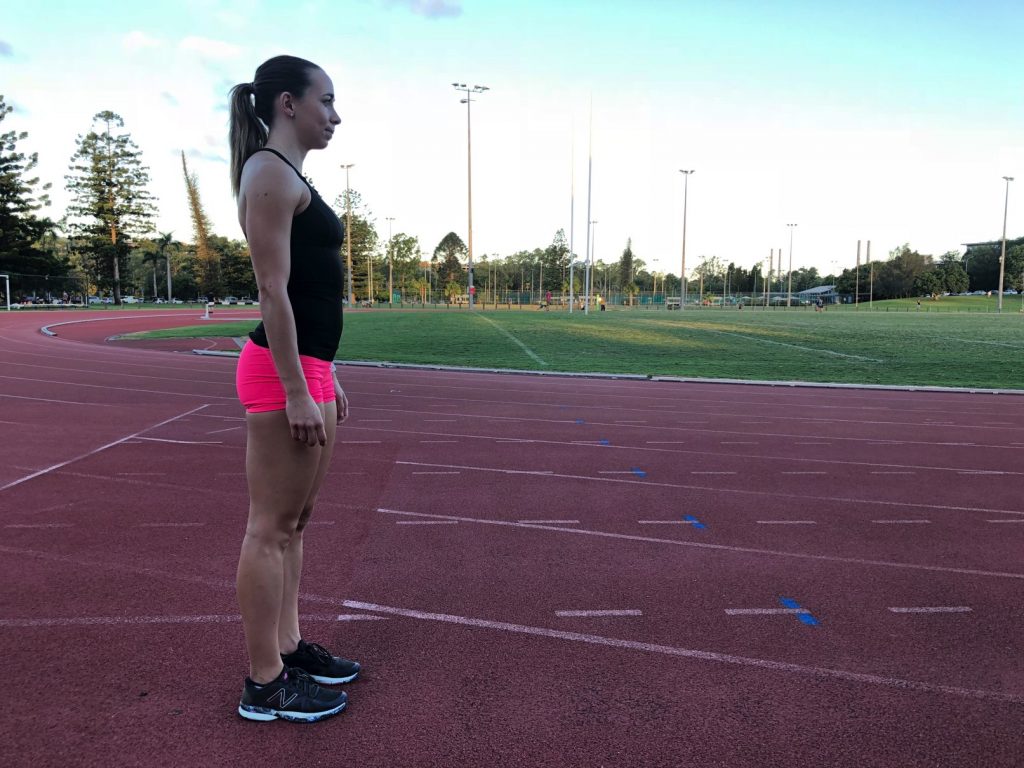
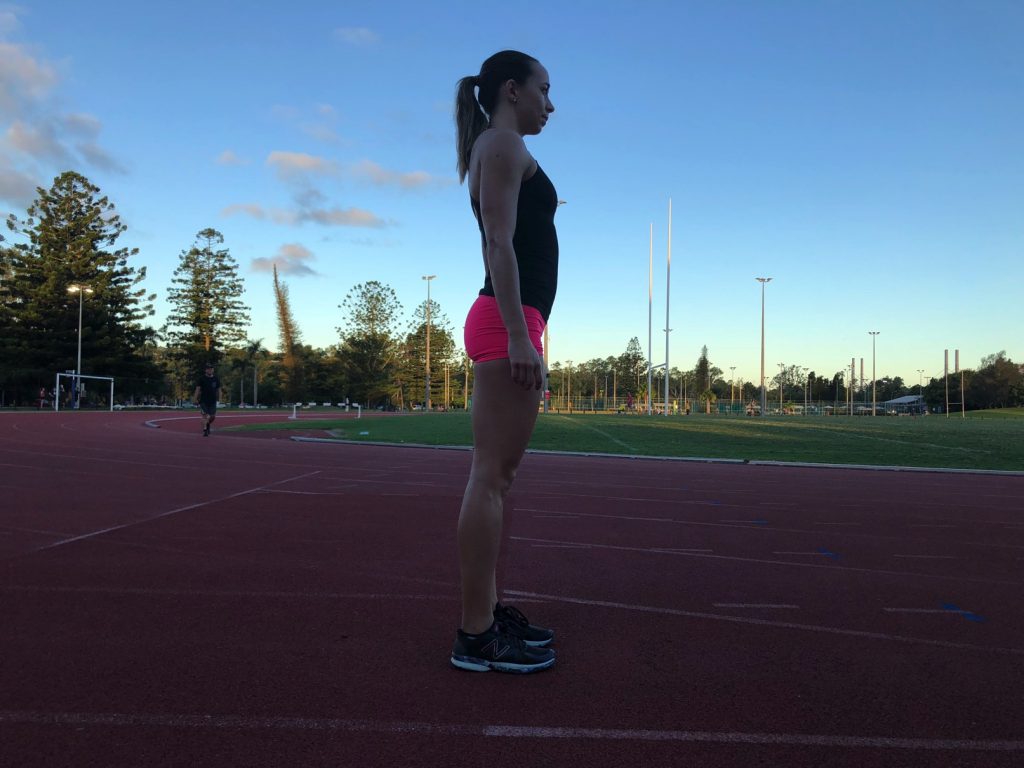
- Walking Knee Hugs
Walking knee hugs are great for stretching your glutes and hamstrings, ensuring your running stride is long and powerful to help propel you forward.
Start in a standing position and raise one knee towards your chest Use your hands to pull that knee into your chest to add an extra stretch to your glute. At the same time add a heel lift to your standing leg. Lower the leg to the ground and step forward to repeat on the opposite leg. I aim for 2 x 10 steps (5 each leg).
- Hurdle Step
This drill helps loosen tight hips and increases the range of motion in the hip joint and surrounding areas.
To do this drill, imagine you have a hurdle on your right side. Swing your left leg up and over, then bring your right leg over. Repeat by moving back across your imaginary hurdle. Again, I aim for 2 x 10 steps (5 each leg).
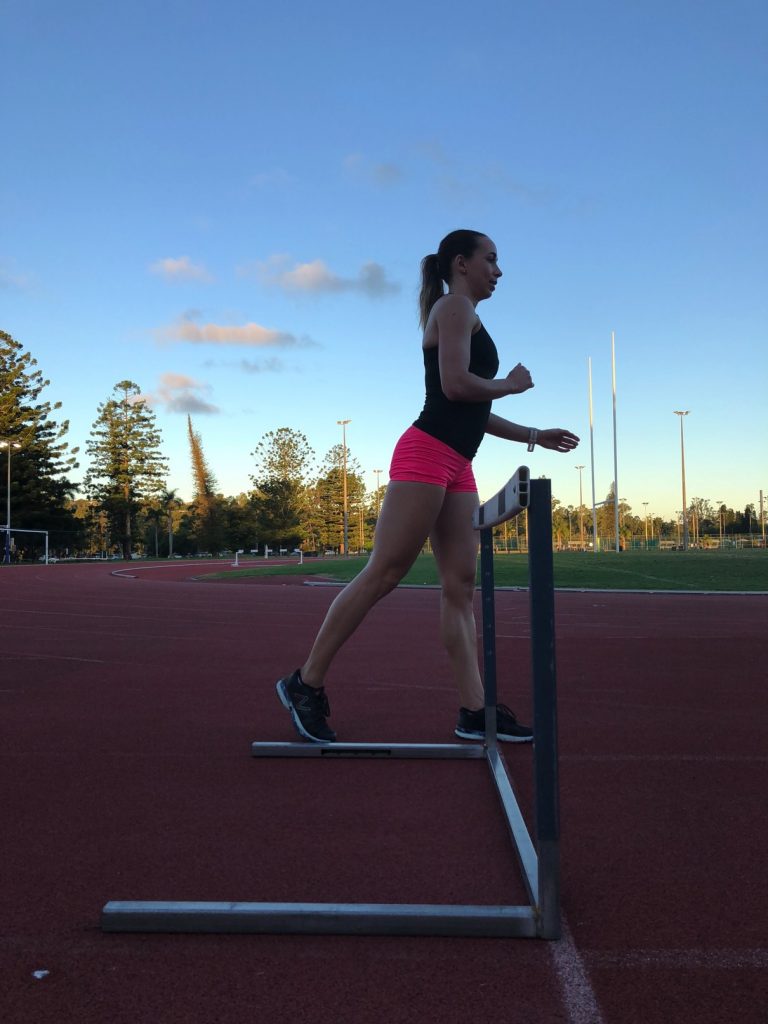
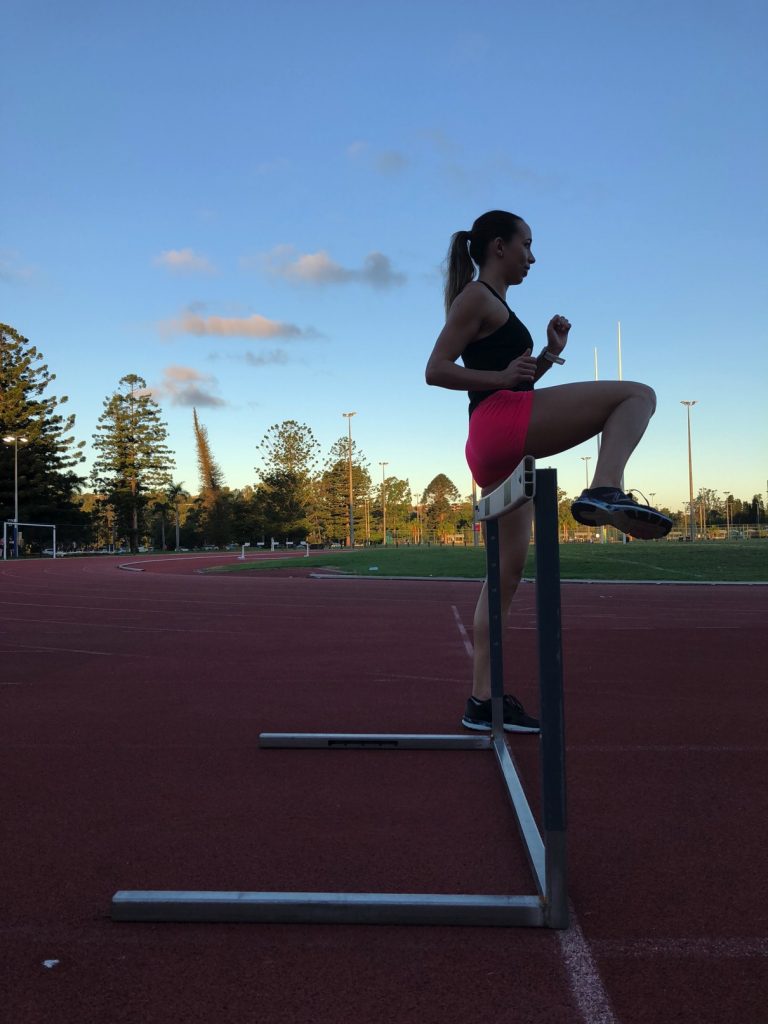
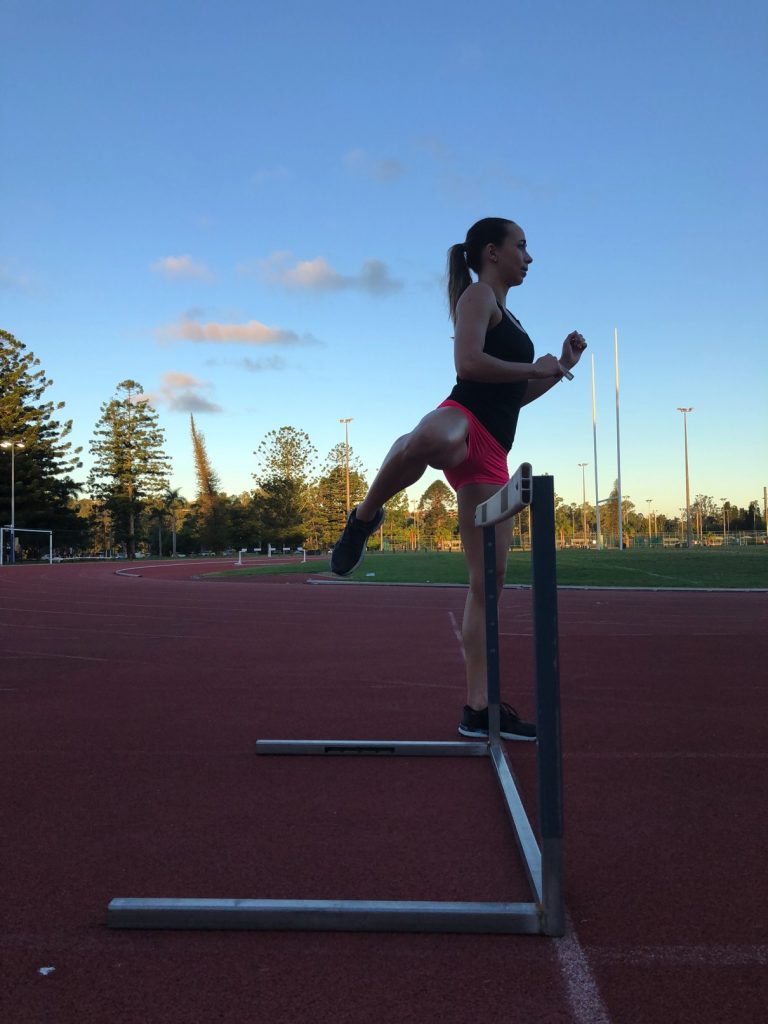
- B March
Start in standing position and lift one knee then kick your lifted leg straight in front of you so that it is at a 90-degree angle to the standing leg. Move your arms with the movement to mimic running.
This move is not only stretching the hamstrings and lower back, but is a movement designed to practice the quick pull we want from our hip flexors to drive our knee up during running.
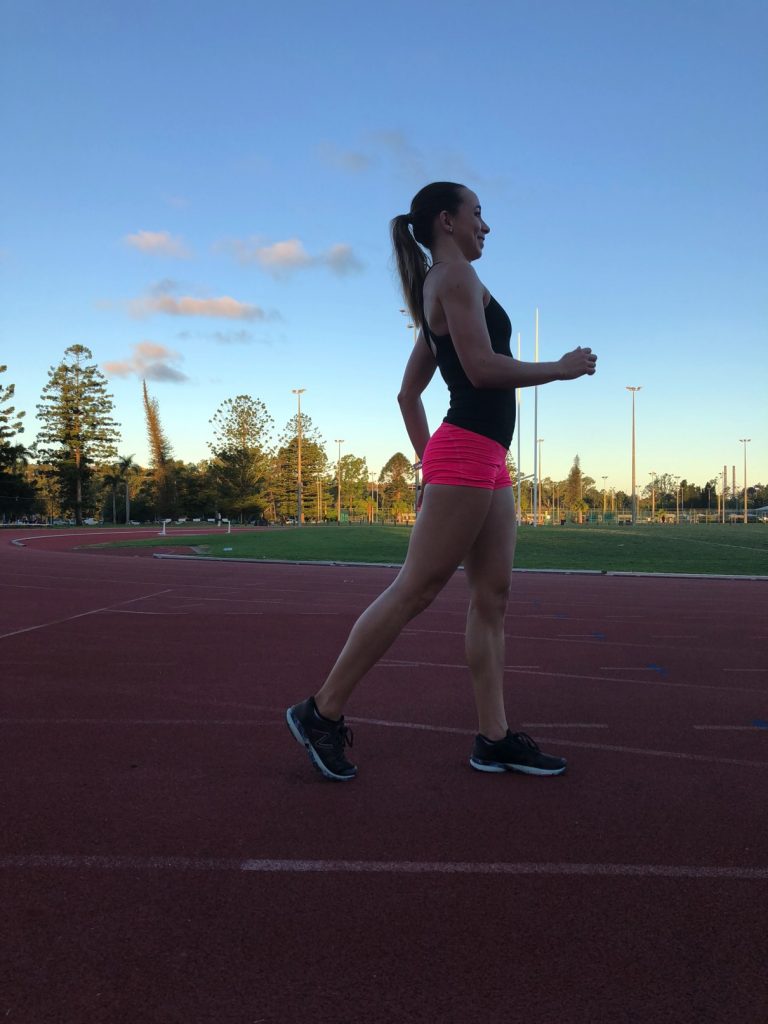
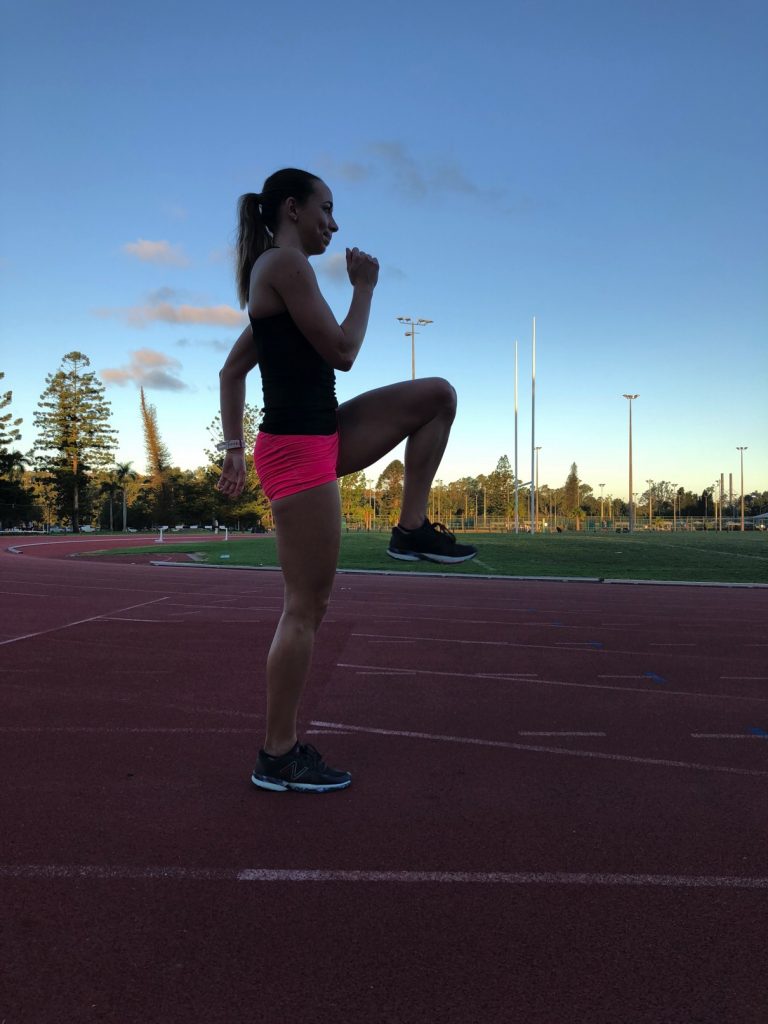
Pictures featuring the author, Caitlin Murdock – Runner’s Tribe


